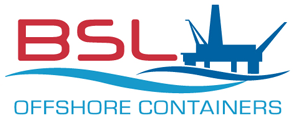Many people wonder what is the difference between standard dry containers used for cargo transport, and offshore dry containers. There are actually multiple differences that could be enumerated throughout this article, but even a 10-item list would be far from exhaustive. The major differences between standard dry containers and dry containers used for offshore applications can be seen in a few ways -- certifications and standards, lifting requirements, and material requirements.
Firstly, all offshore dry containers must be designed, manufactured, and tested to the requirements as outlined by the following:
- The DNV 2.7-1 for offshore containers
- The EN 12079 design, construction, testing, and inspection/marking for offshore containers
- ISO 1161 requirements on specifications of corner fittings for series one freight containers.
Offshore container regulations and requirements are much more strict than they are for their standard marine counterparts. For all offshore applications, ensure that the containers you choose are made to these latest standards.
Another major difference between standard transport cargo containers and offshore dry containers is a difference between lifting bars and pad eyes used for lifting. Secure, horizontal lifting is required for all containers during transport. While standard lifting bars for shackles are acceptable for most other containers, pad eyes used on offshore containers make for better stabilization of the dry containers, ensuring a horizontal lift at all times.
Finally, the materials required to build offshore dry containers are chosen for their lasting durability, especially in the harsh and/or rapidly changing conditions of the offshore environment. They have to be thicker than standard shipping containers, and they have to be able to last longer with regular maintenance and inspections. The required materials for offshore dry containers are completely metallic -- including carbon steel, wrought alloy aluminum, and carbon-manganese steel. They must be able to keep the goods and commodities contained therein securely.
Offshore containers are built to support a great deal of equipment, supplies, and goods for long-term storage, access, and transport from site to site. They are made to withstand long-term, heavy-duty usage in the rigorous and demanding environs of offshore sites. In other words, the design, construction, materials, and manufacturing of all offshore dry containers is done specifically for use on offshore drilling sites, and made to handle the great demands that are placed on them. Offshore dry containers are built to be used exclusively for offshore purposes (though they are excellent for other applications as well).
For more information on our offshore dry containers, please contact us at BSL Offshore.
|

